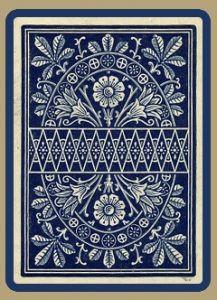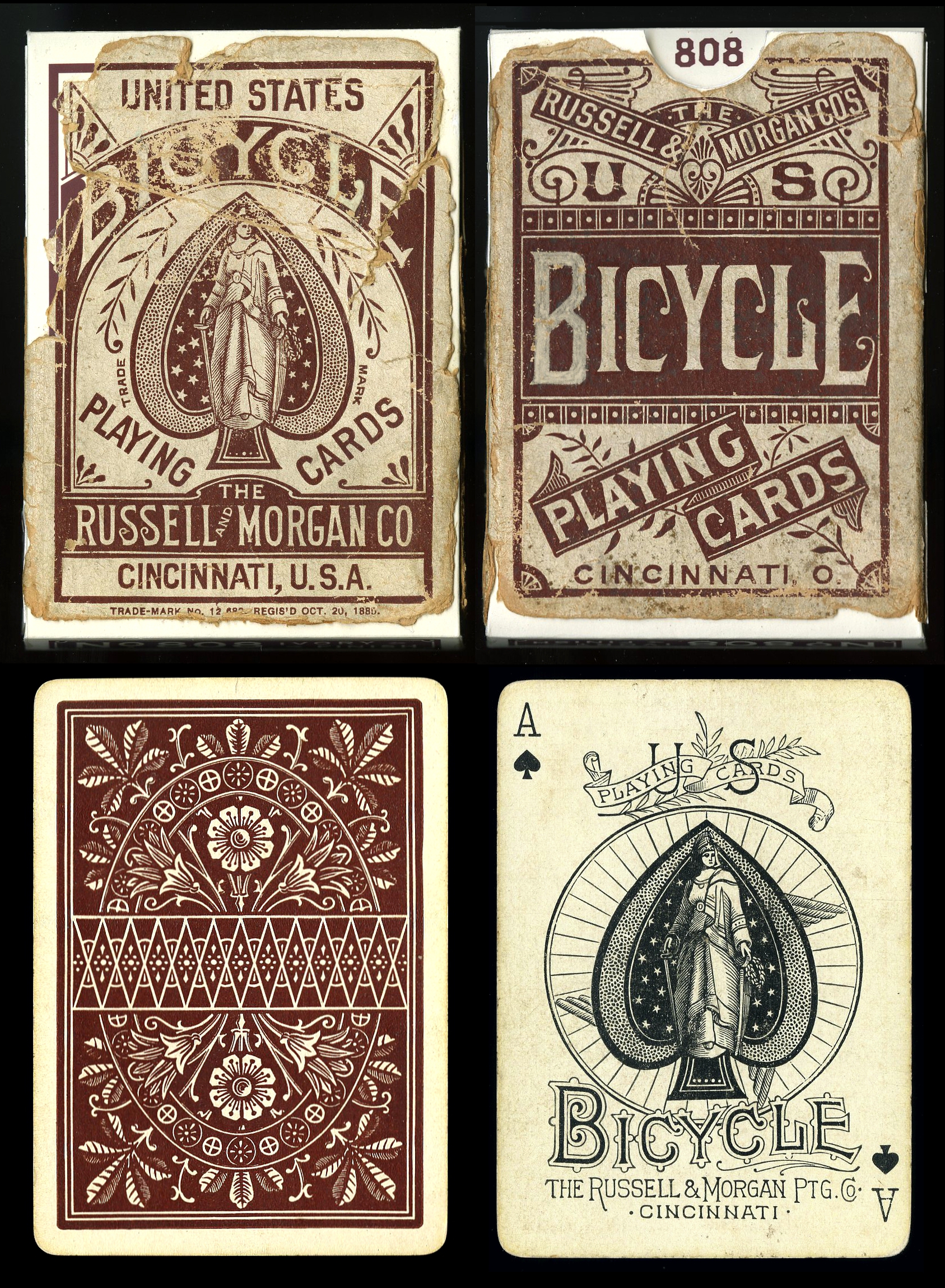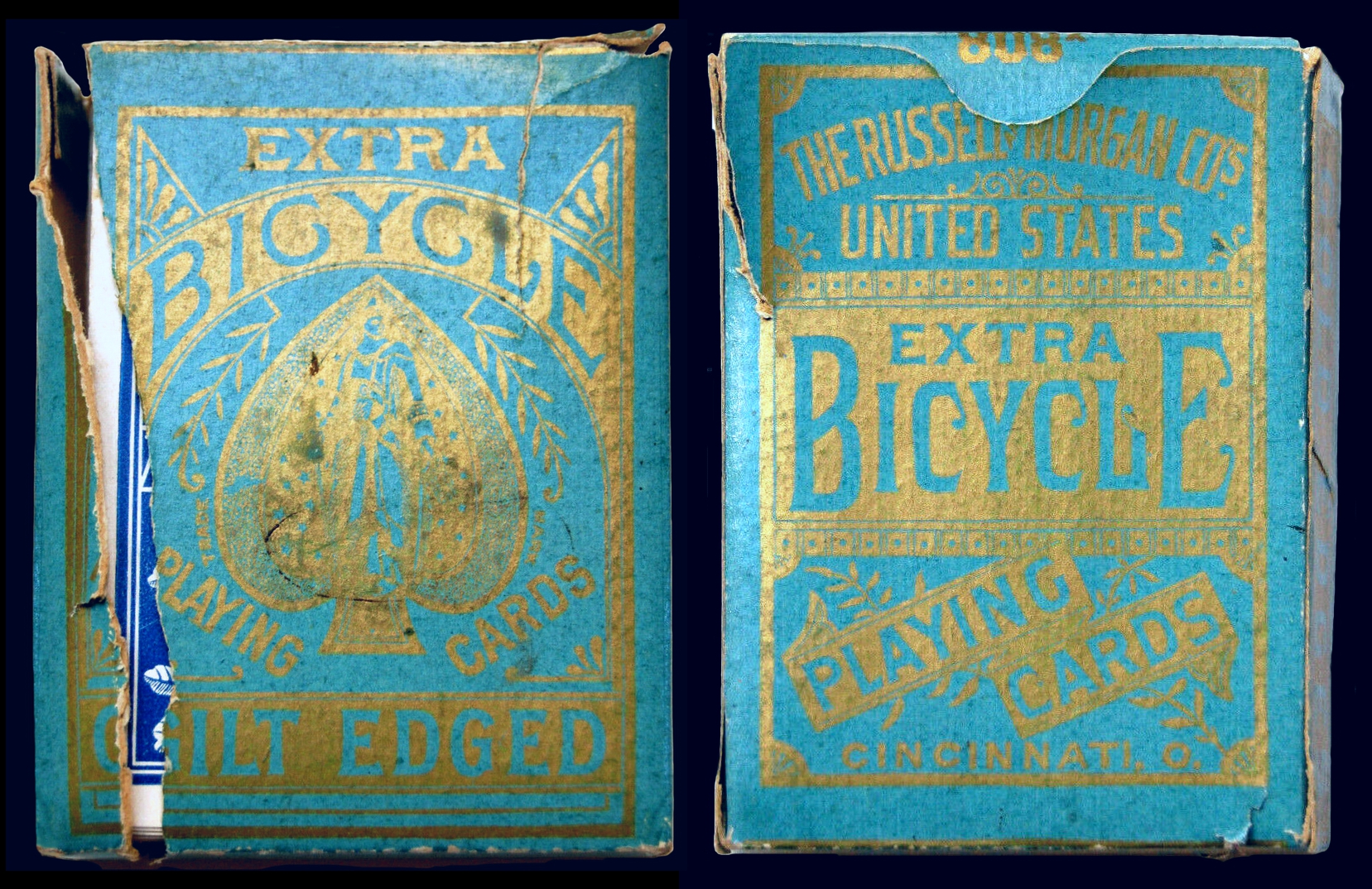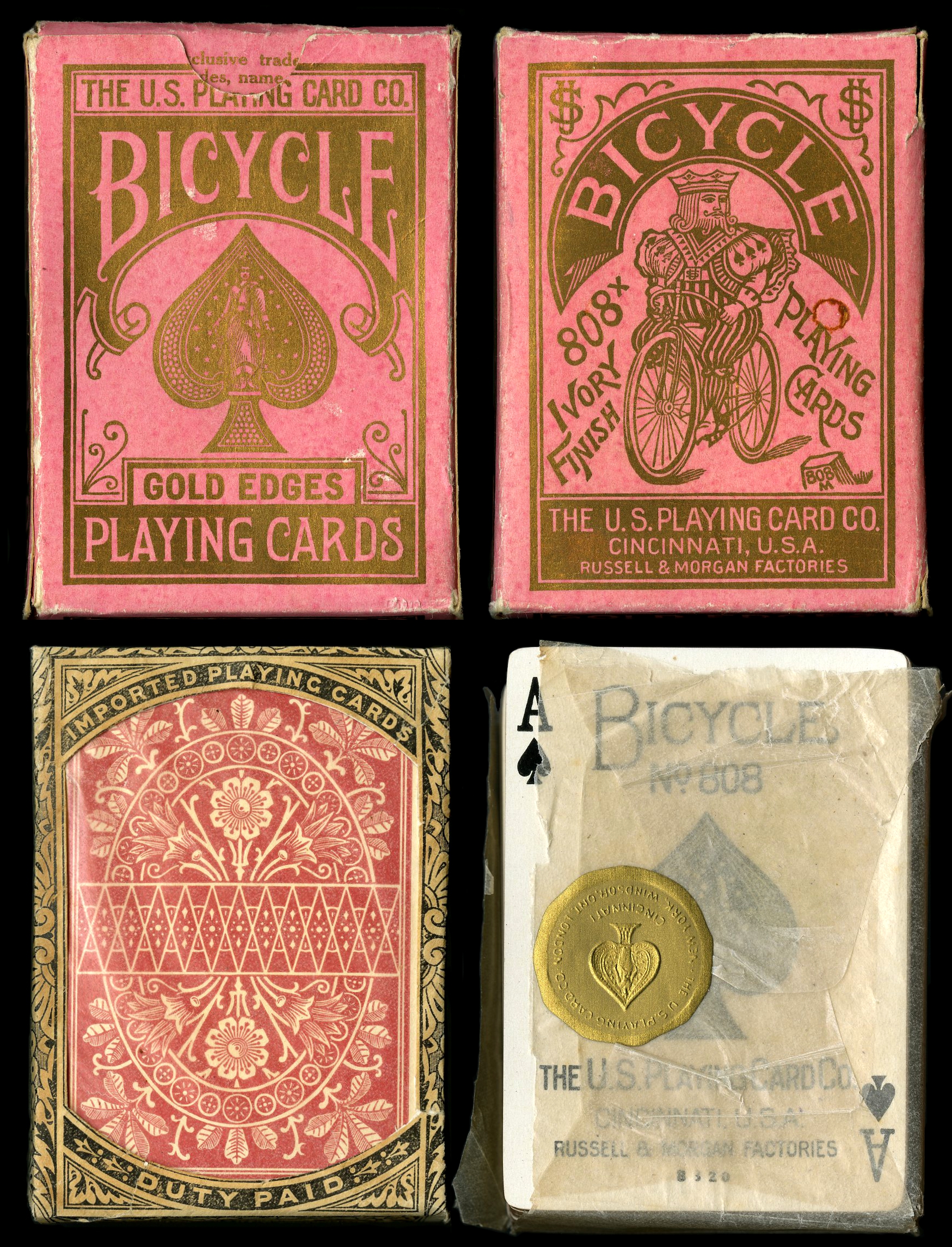Mrs. Robinson noted in her comprehensive booklet on Bicycle cards that Lotus was introduced in 1891, but I have seen several examples in US8a, the earliest version of Bicycle cards, so a more accurate start date is 1885. Discontinued in 1943.
Lotus is a lovely back design that can best be described as Egyptian Revival. It is one of several with no representation of bicycles, parts or wheels. Lotus is a common deck in red and blue, at least in US8c. It was also released in the United Kingdom, and available there in an edition with gold edges. For more information, click on the “UK,” above, and also see the description and photograph below.
Mrs. Robinson shows Lotus as being issued in green and brown, but I only know of two brown decks. One is a standard issue in a partial original brown box, pictured below. This is the first standard issue brown Lotus I had ever seen, and also the first brown or green US8 box that has ever crossed my threshold. The second brown deck is owned by Steve Bowling and is by no means a standard issue (see a description, below). I have never seen a green deck or Lotus singles circulating in either green or brown. Unless some hidden decks percolate to the surface, expect to find Lotus only in red or blue.
A collector friend and frequent correspondent writes, “my earliest sample book has a price list dated 1/2/1899 and in the Bicycle section Lotus is listed as being available in the standard red and blue only. Therefore, if this design was ever offered in brown and green, it had to have been somewhere shortly after it was introduced. I have no examples of any kind for Lotus in either Brown or Green.”
I made an interesting observation about Lotus in 2017: early issues of the design were actually one-way, meaning that the design is different if you flip it 180 degrees. in other words, the deck has a distinct top and bottom. Unlike many Bicycle decks that were deliberately drawn to be asymmetrical, Lotus’s one-way aspect seems to have been unintentional, and in any event is certainly subtle: in early issues the shading on the center of the lotus flower appears on the same side in both flowers. At some point, this was corrected and later versions of Lotus have the shading on opposite sides of the flower. For a comparison between these two different versions, see the details of the designs, below. Some other Bicycle backs with subtle one-way designs are Motorcycle No. 1 and early versions of Pedal and Rider.
In a rare instance of a longstanding Bicycle back design being used for an entirely non-traditional pack of cards, Lotus was released in 1927 in a 60 card deck designed by Helen Parker Ford called “Shuffle Staff.” Each card featured some combination of musical notes or symbols, corresponding letters, and the four suit symbols. The deck was designed as a musical teaching tool. The cards appear to be standard issue USPCC cards which must have been sold with blank faces. Ms. Ford would have then made arrangements to have the faces printed with her designs. See images of a few of the cards and box, below. Emblem, Old Fan, Safety and Thistle (Sod) were also released as music decks at some point.
Steve’s brown Lotus deck is a promotional deck printed by the U.S. Playing Card Company for Krupp’s, a steel manufacturing company (Hochman US8). The deck is very rare, and came in its own celluloid and cloth box. The joker depicts a Krupp’s No. 1 railroad train wheel, as does the outside of the box. This deck was issued in a red Lotus as well, and at least one other back design: a red Racer No. 1 (US8b), of which I have an example. Please visit the Racer No. 1 page for pictures and more information about this unusual deck of cards.
The last image, below, is an extraordinary pink tuck case from the United Kingdom, dating from 1921, based on the “B” code on the ace of spades. As indicated, the Lotus deck within has bright gold edges, and is housed in an internal U.K. tax wrapper. I have never seen a Bicycle deck in a pink box before.
SALES DATA
A G/VG blue US8 Lotus deck (no joker/no box) sold on eBay for $141 on 10/08/16.
A VG blue US8b Lotus deck (52 + joker) sold on eBay for $110 on 11/20/16.
A red Lotus US8a “Best Bower” high wheel joker sold on eBay for $152 on 1/10/17.
A red Lotus US8a ace of spades sold on eBay for $79.00 on 1/14/17.
A NM red US8c Lotus deck + joker and box sold on eBay for $100 on 9/07/17.
A VG red US8b Lotus deck (no joker/no box) sold on eBay for $51 on 7/07/20.
A VG blue US8a gold edged Lotus deck (52+ joker) in original box (OB2) sold on eBay for $1124 on 9/01/20. While any US8a box is very rare, this particular box was especially rare for its vibrant blue background color (see an image of the box, below).









